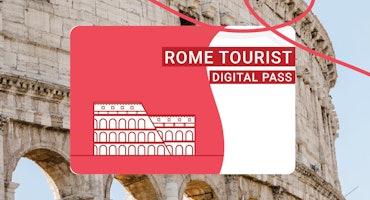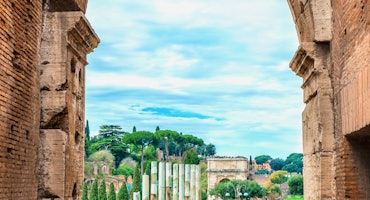Tours

Rome Tourist Card
Rome Tourist Card
Snap up the Rome Tourist Card and you'll get everything you need to explore Rome's top highlights including Colosseum, Palatine Hill, Roman Forum and Hop on/off bus. You can even choose the order you see things in.

Colosseum, Roman Forum & Palatine Hill: Priority Entrance
Colosseum, Roman Forum & Palatine Hill: Priority Entrance
Skip the long lines at the Colosseum with this priority-entrance ticket. This ticket will let you bypass the crowds. And after exploring the Colosseum you can head to the area of the Roman Forum and the Palatine Hill.

Vatican Museums & Sistine Chapel: Skip The Line
Vatican Museums & Sistine Chapel: Skip The Line
This ticket will make you save stress and time by allowing you to get priority entrance and skip the line. Visit the the countless masterpieces by Michelangelo, Raphael, Caravaggio, Tiziano and the Sistine chapel.

Borghese Gallery: Fast Track
Borghese Gallery: Fast Track
Galleria Borghese is located in the villa of the park Villa Borghese. Admire the architecture and furnishings of this beautiful villa. It is a museum full of art from the Renaissance. The collection includes several sculptures and paintings. Because of limited capacity get tickets for this museum weeks in advance.

St. Peter’s Basilica: Dome Climb with Guide
St. Peter’s Basilica: Dome Climb with Guide
Get the most out of your visit to St. Peters with a guided tour to climb the basilica’s dome designed by Michelangelo and admire one of the stunning view. After the tour, you can explore the the basilica at your own pace.
Arch of Constantine
A triumphal arch was built to honor a major turning point in history and the major transformation of the religious landscape of the western world. Owing him the influence of the major faith in the world, the Arch of Constantine was built in 313 ‘till 315 AD to honor Constantine’s victory.
Emperor Constantine had patronage the ultimate conversion to Christianity from paganism which ended Christian persecution. His defeat over Maxentius from the Battle of the Milvian Bridge in 312 AD gave him power to solely control the Roman Empire in the west and finally brought peace Rome. This gave him imperial power and integral authority to tolerate Christianity throughout Rome. It was his conviction and appreciation of the Christian God that made him triumphant over Maxentius, thus gave rise to Christianity as the official religion of Rome and now one of the largest religions in the world. Hence, it turned the Arch of Constantine as the symbol of Christianization of Rome and the Romanization of Christianity.

This Arch of Constantine, also known to Romans as Arcus Constantini, was made up of brick and marble materials. Many of the embellished effigies of the Arch of Constantine have been incorporated from older monuments, buildings and remnants of figures since the time of Emperor Hadrian and Emperor Trajan. The sculptures were partially restored and integrated into the arch to associate Constantine to the other great emperors of Rome.
The Arch of Constantine stands 21 meters high with a width of about 26 meters. It consists of a large main arch at the center and smaller identical arcs on both sides. The Arch of Constantine is located between the Colosseum and the Palantine Hill.



